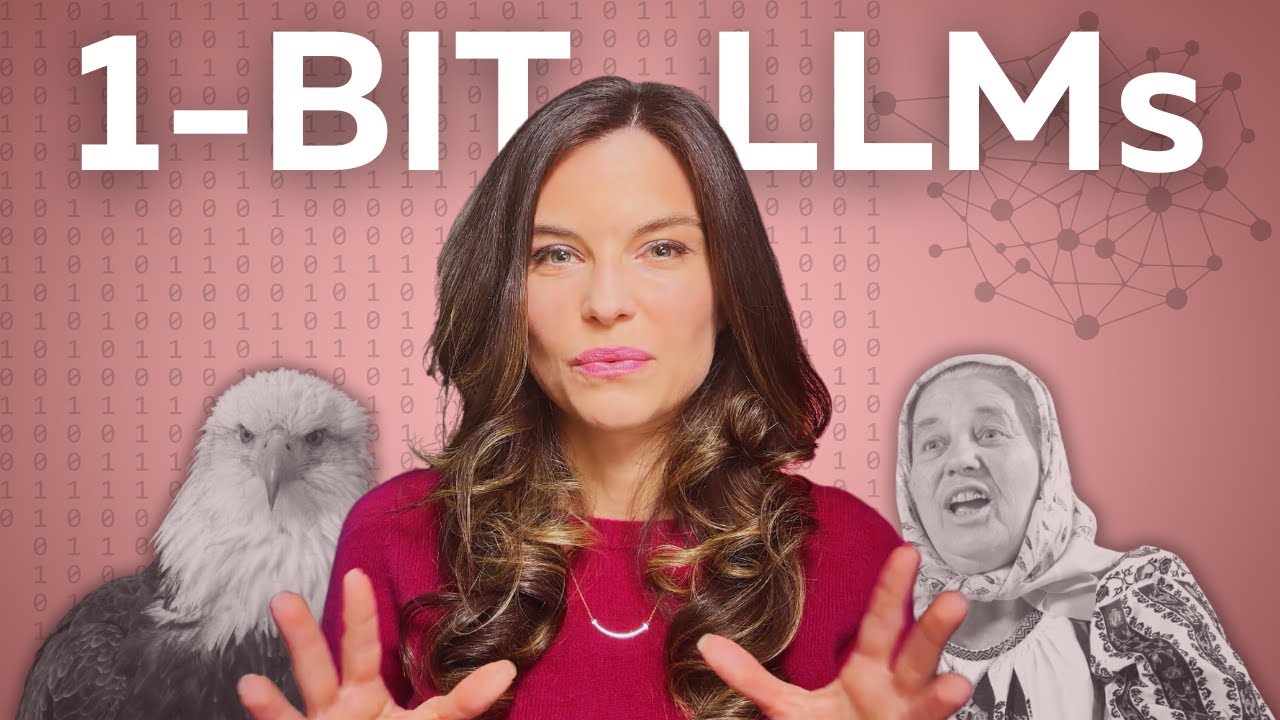The video explains that “one bit” LLMs, like Microsoft’s BitNet, use a combination of binary and ternary weights to enable faster inference and lower memory usage, making them practical for local deployment while maintaining accuracy through quantization-aware training. Despite not being fully one-bit in practice, these models leverage efficient hardware techniques and optimizations, showing promising performance and potential for future scaling as research and industry interest grow.
The video explores the concept of “one bit” large language models (LLMs), highlighting that Microsoft’s term “one bit LLM” is more of a metaphor than a literal description. The actual models, like Microsoft’s BitNet, use a combination of binary and ternary weights, resulting in around 158 bits per weight, which raises questions about the feasibility of fractional bits and hardware implementation. The speaker emphasizes that these models aim to achieve faster inference and reduced memory usage, making them more practical for running locally on consumer hardware while maintaining privacy.
The architecture of these models closely resembles traditional transformer-based LLMs, with the key difference being the replacement of standard linear layers with “bit linear” layers. In these layers, weights are turnary (-1, 0, +1), and activations are stored in 8-bit or 4-bit integers. The rest of the model remains in full precision, which allows for efficient computation through simple addition and subtraction rather than complex matrix multiplications. Layer normalization before quantization ensures stable and efficient operation by homogenizing activations, making the quantization process more resilient to outliers.
Training these models involves a process called quantization-aware training (QAT), which differs from post-training quantization. During QAT, models are trained with fake quantization, where weights are temporarily quantized during the forward pass but remain in full precision during backpropagation. This approach allows the model to adapt to low-precision weights, making inference with turnary weights feasible. The straight-through estimator (STE) is used to approximate gradients despite the non-differentiable rounding operations, enabling effective training despite the lossy nature of quantization.
Storage and computation optimizations are crucial for these low-bit models. The video discusses methods like bit packing, where multiple two-bit weights are stored in a single 8-bit integer, and elementwise lookup tables (ELUTs), which group weights to reduce storage overhead close to the theoretical minimum. Efficient matrix multiplication techniques leverage the repetitive patterns in turnary weights, using precomputed lookup tables and caching to accelerate inference. Microsoft has also released specialized tools like bitnet.cpp to optimize runtime performance on CPUs and GPUs.
Finally, the speaker evaluates the practical performance of one bit LLMs, noting that while they are not yet on par with larger proprietary models, they are competitive with other open-source models with similar parameter counts. Benchmarks show that BitNet models perform reasonably well, especially considering their significantly reduced memory footprint. The video concludes with optimism about future developments, suggesting that as scaling laws hold for low-bit models, larger and more capable versions are likely to emerge, driven by increasing research and industry interest from companies like Google and potentially Chinese AI initiatives.
